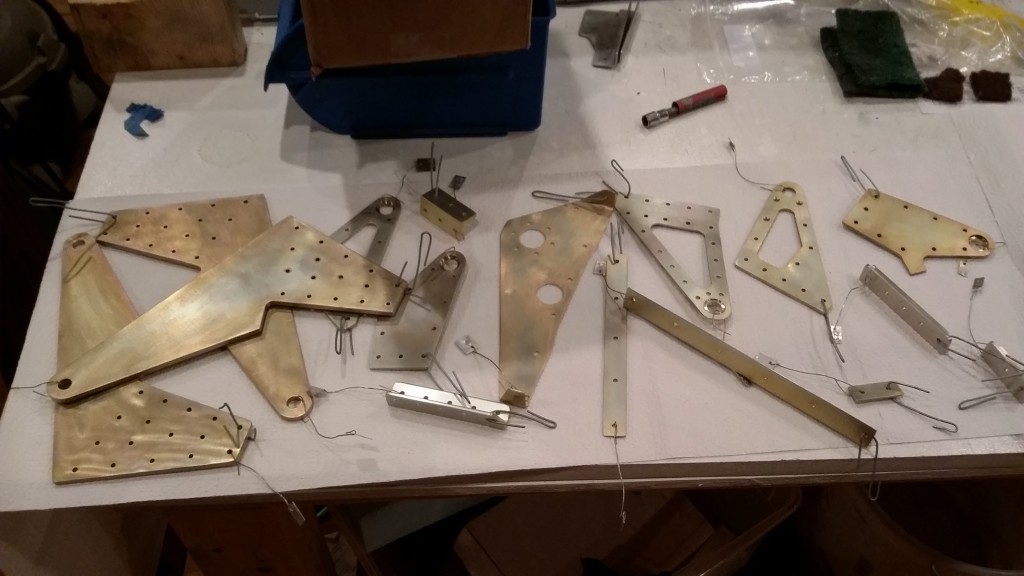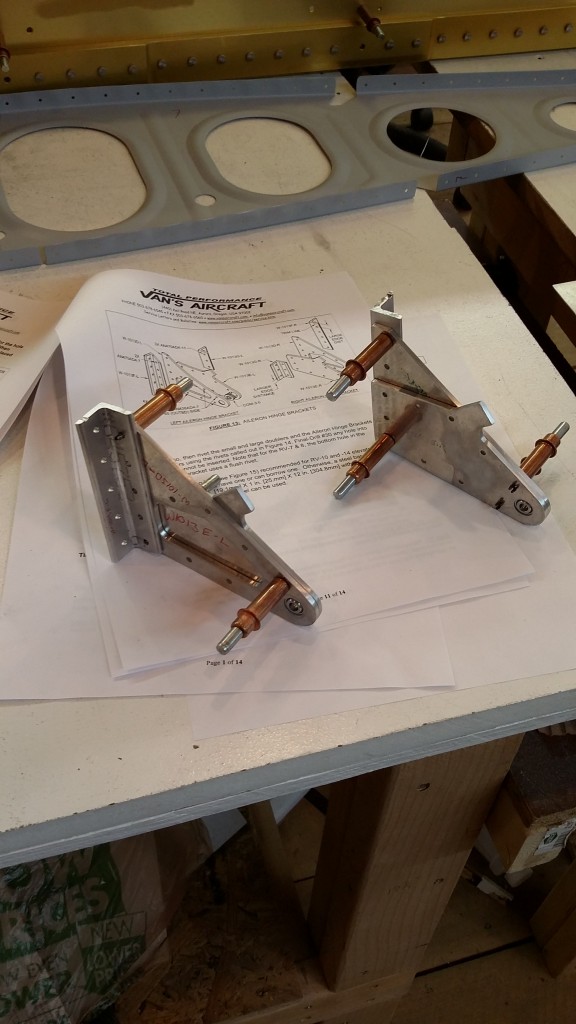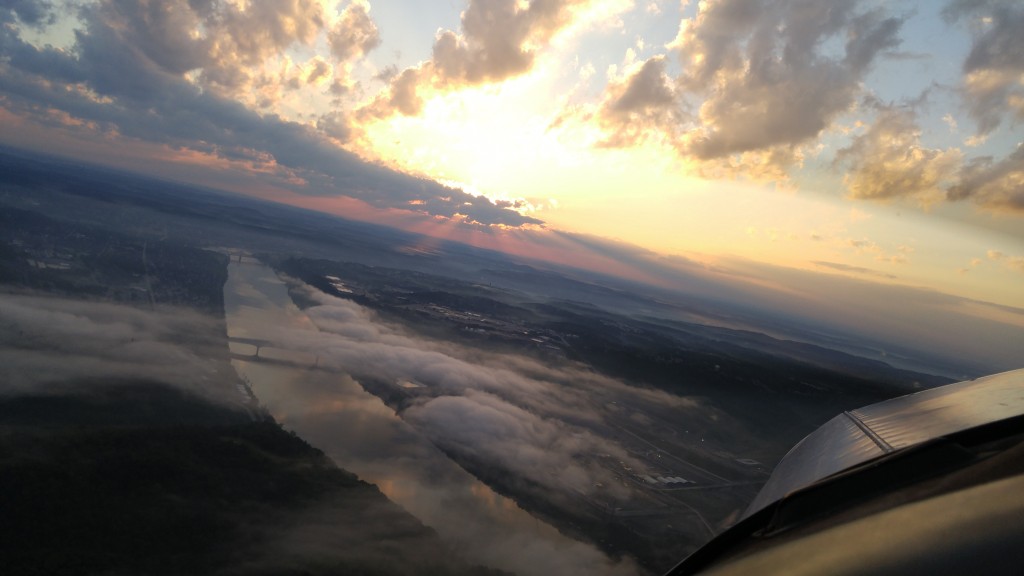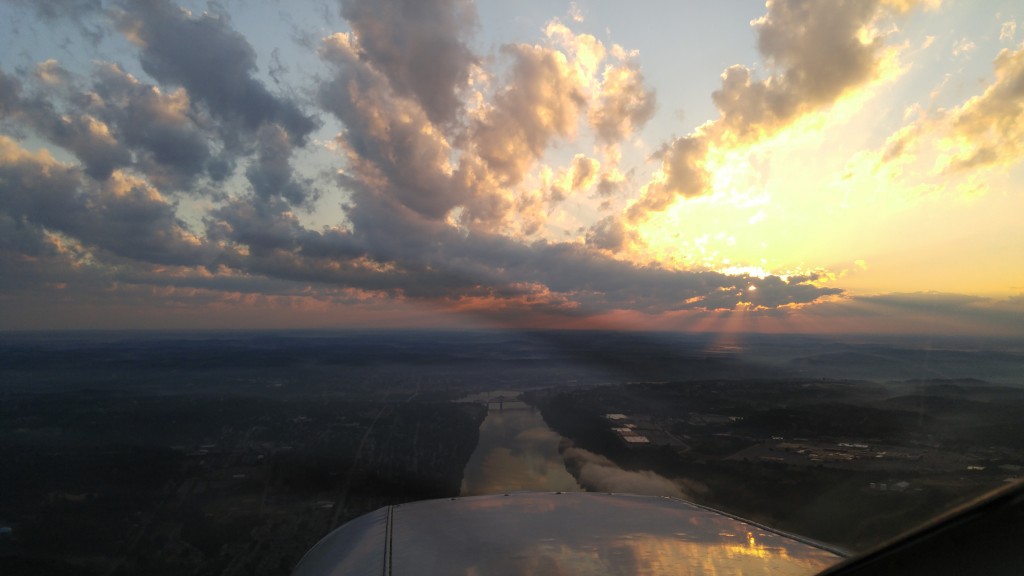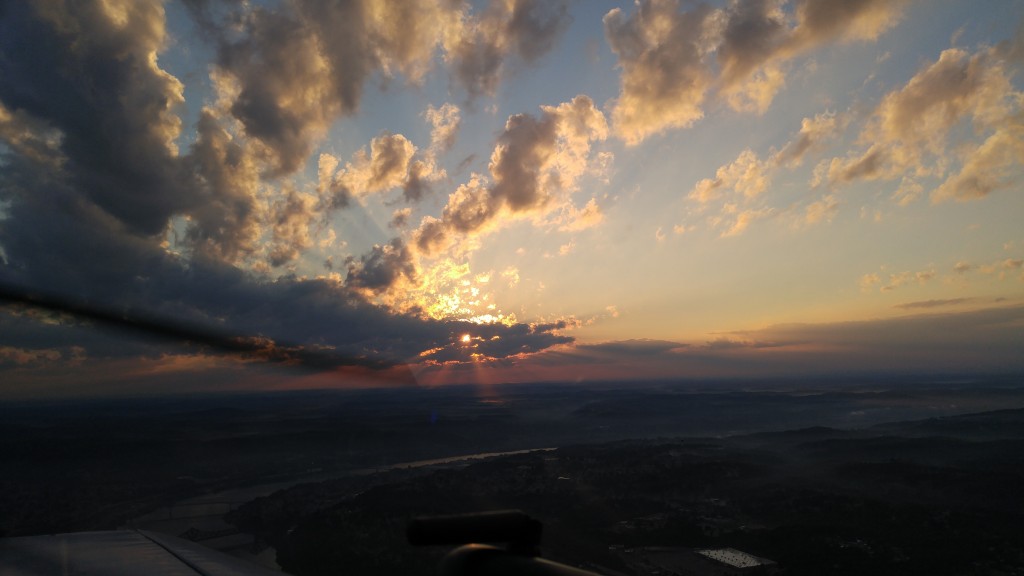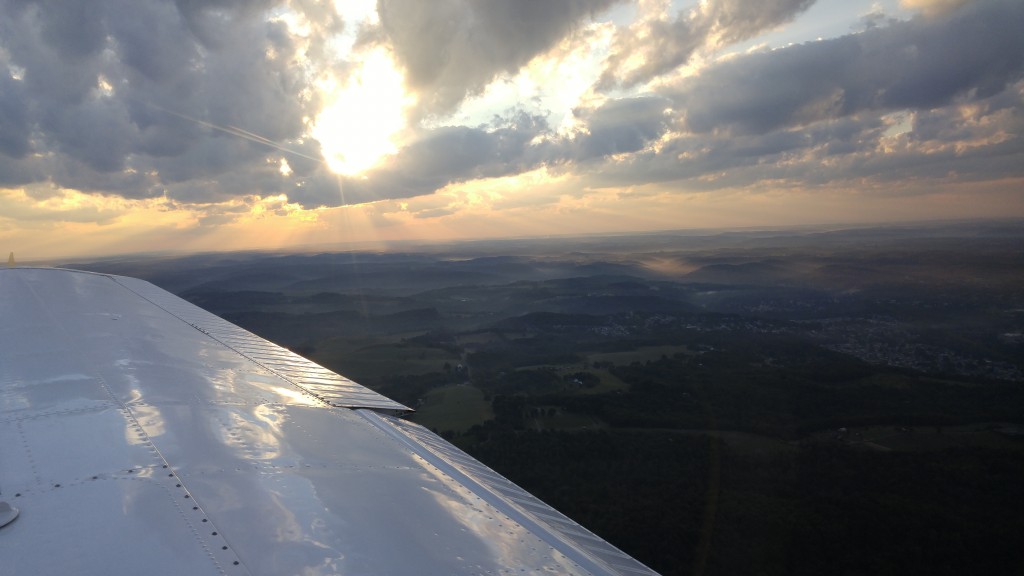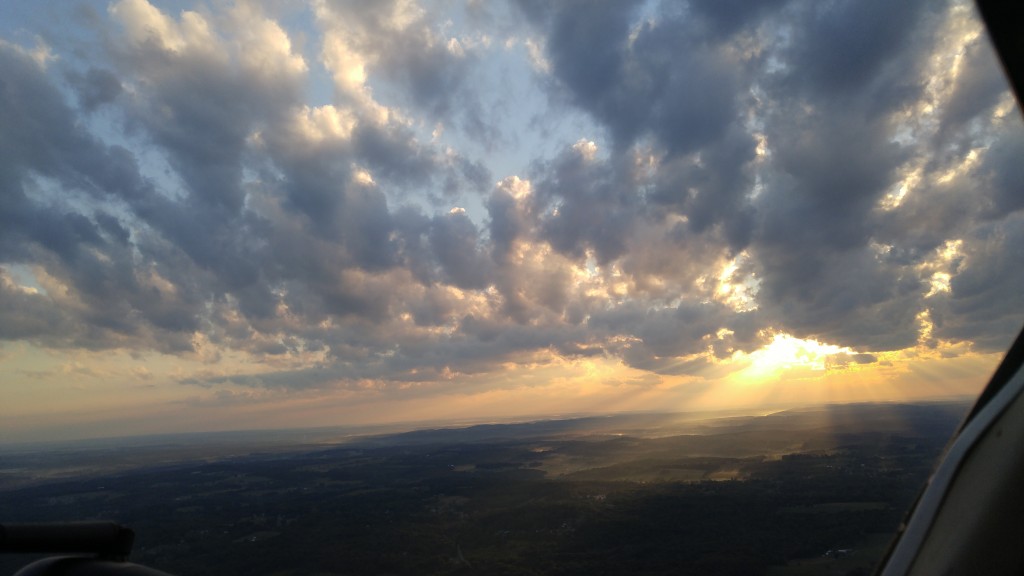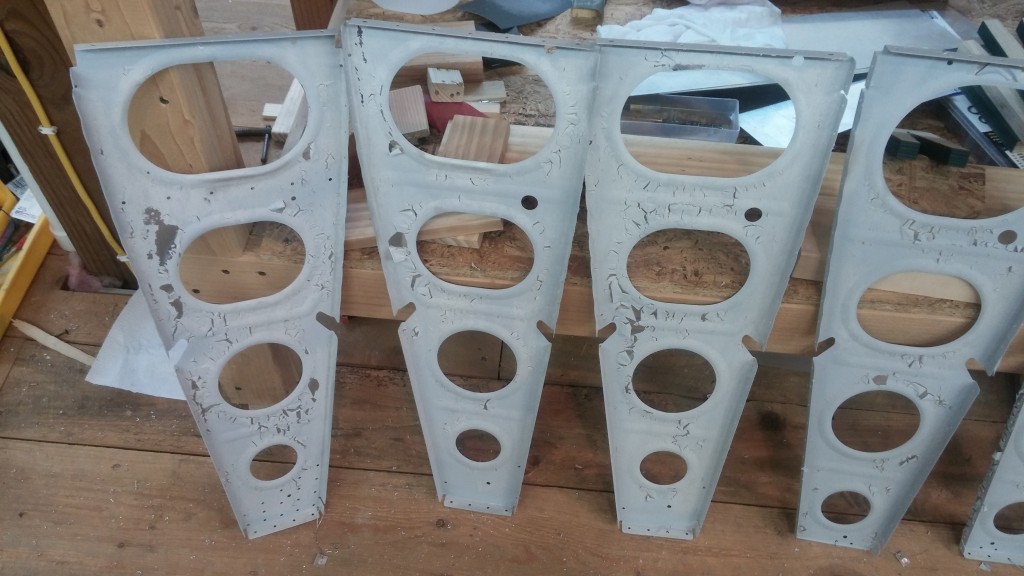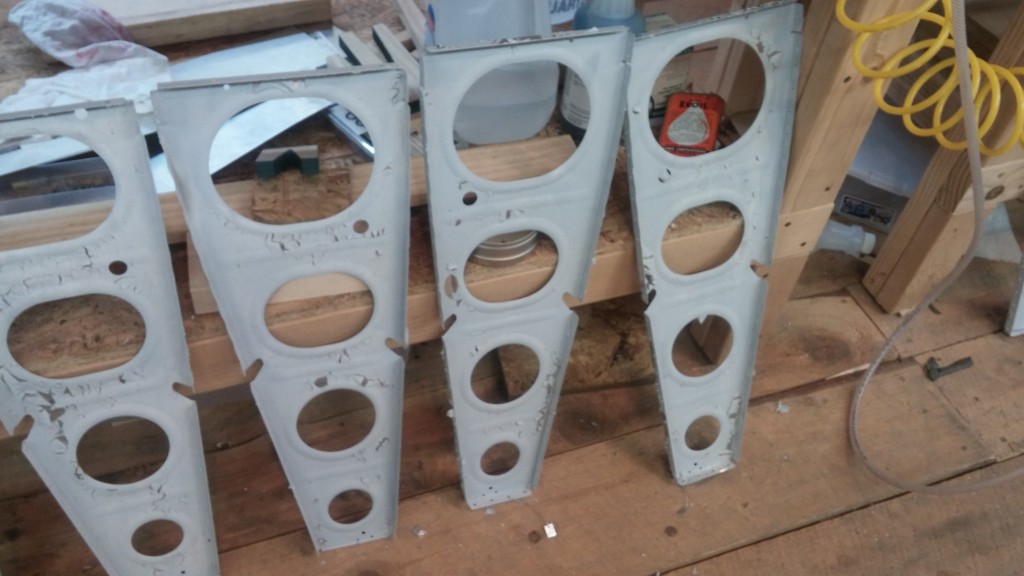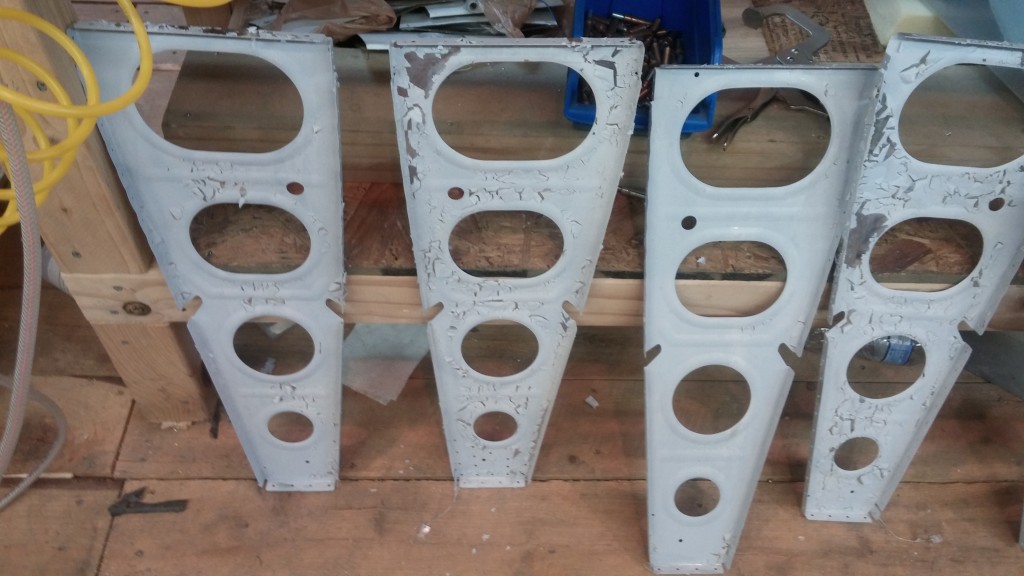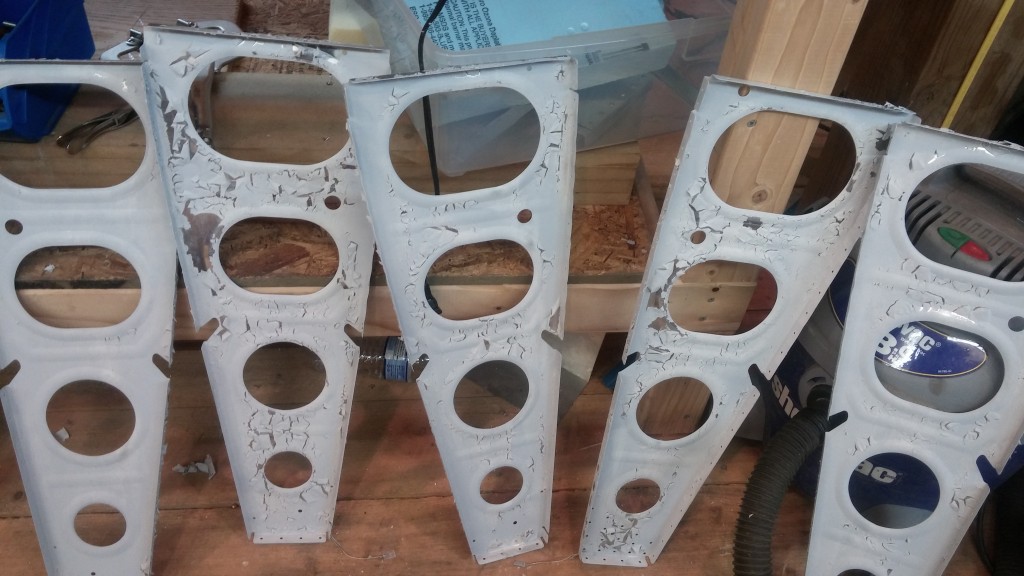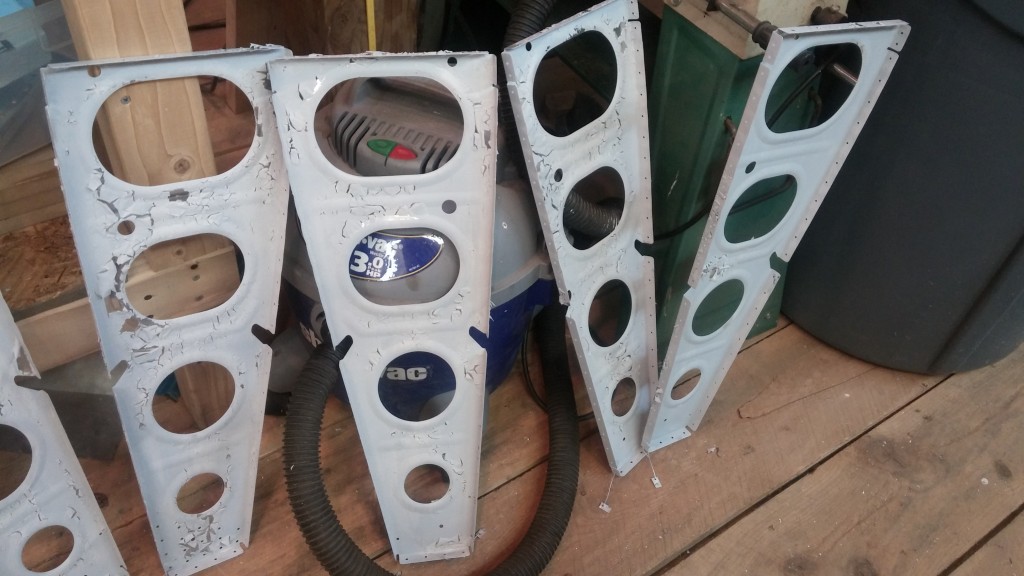Author: Dave
Page 14-5 Errata
I noted when riveting the outer ribs to the left wing spar that Page 14-5, Figure 2 calls out for the two ribs inboard of the most outboard rib, “AN470AD4-5, 4 PLACES.” There are eight holes to be riveted here.
I believe this is an error on the part of Van’s, and it appears others have found the same error. The thought is that it was introduced after the design of the RV-14 was finalized. Here is a relevant VAF thread on the subject.
Lots of alodining
Outboard Aileron Brackets
Finished deburring and test fitting outboard aileron brackets yesterday. Need to final drill and machine countersink.
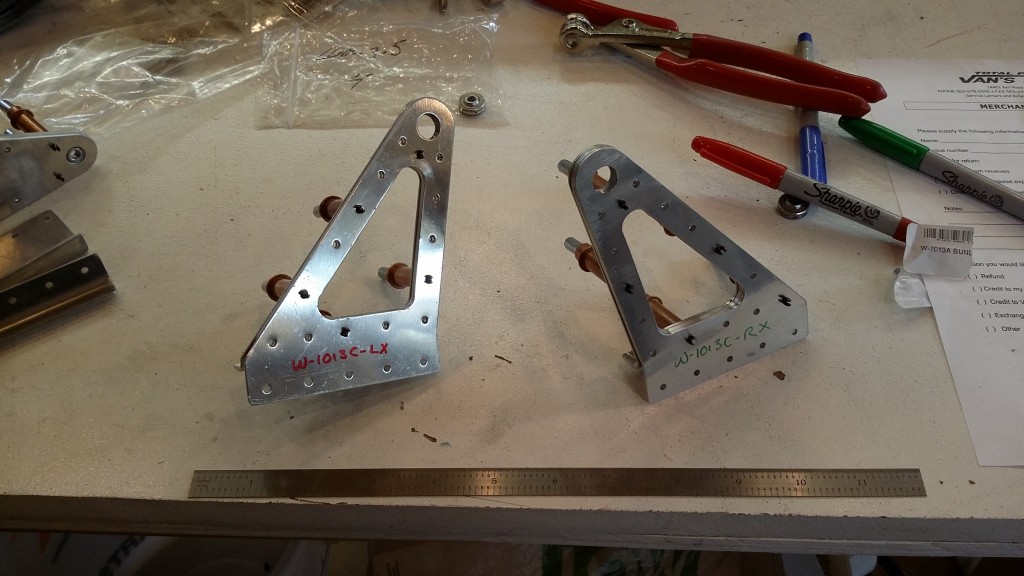
Also etched and alodined the left wing flap brackets and torque tube bracket assembly parts. Priming to commence when I have enough parts to justify a batch.
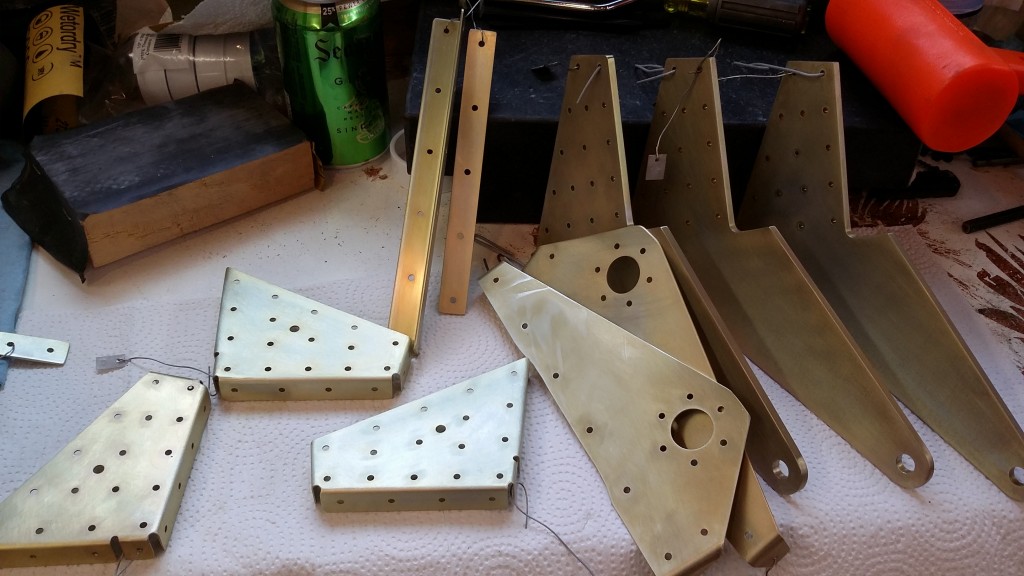
Primer Decision
I was running out of the SEM self etching primer and after thinking long and hard about it I decided to switch to a two-part epoxy primer. This was due to a number of reasons, but primarily because I was having issues with the SEM primer not adhering consistently. No matter how well I prepared some parts, it seemed I frequently had small spots that didn’t stick. I’m not sure whether this was due to the age of the primer (it is at least several years old, as it was included with the empennage kit that I bought, and the previous owner had it for some time before that). I am certain the metal was prepared well.
When the SEM primer stuck well it appeared to be quite robust. It is difficult to scratch when properly adhered. I just couldn’t get it to be consistent, whether that was due to age or some other unknown factor.
So I decided I was going to go with a spray-gun applied primer and after some searching around and talking to people, I decided on the Sherwin-Williams CM-0724400 chromate primer. I wanted a few things in a primer:
- Superior corrosion protection
- Adhesion
- Flexibility (physical)
- Epoxy base
- Light color
The first three are rather self explanatory. I wanted the light color because I think inspecting the aircraft will be easier if the internal parts are lighter in color. I think it will be more likely to show (or at least easier to see) cracks, imperfections, dirt, and leaks against the background of a light color primer. In addition, the lighter color will make it easier to light up the inside of a wing during inspections than a more absorptive shade.
I talked to a Sherwin-Williams technical support guy and even though I’m just a homebuilder, they treated me well and were willing to spend time talking about their products’ features and compatibility. The only disappointment I had was finding out that S-W will not ship aircraft paints to their local retail paint stores. I was hoping to reduce the hazmat fee associated with my order by having them ship it to a local store along with other stuff, but the paint store, while very helpful, finally had to tell me they couldn’t do it. I ended up buying the primer from Aircraft Paint Supply in Ohio. The rep from APS was very helpful, and I received the paint two days after my order. The Sherwin-Williams primer meets all of those criteria and it is a rather bright shade of yellow. I haven’t shot a coat of it yet, but I will be doing so soon once I finish a number of small parts for a painting batch.
Working on Wing Parts including SB-16-03-28
Morning Flying
Today I knew was likely to be a trying day, so I got up early and went flying to clear my head and make sure I saw something good today. Well, I’ll let the pictures speak for themselves.
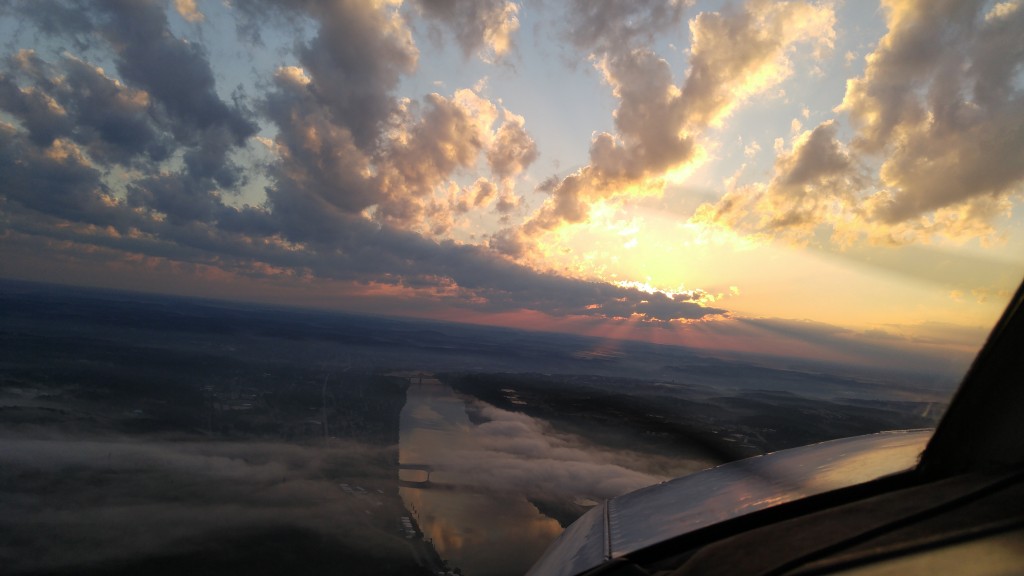
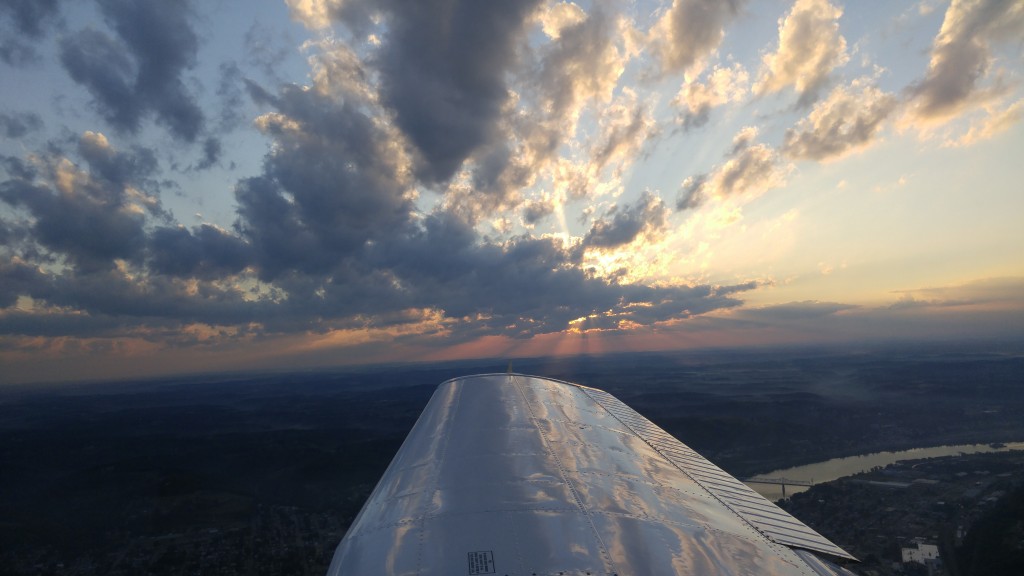

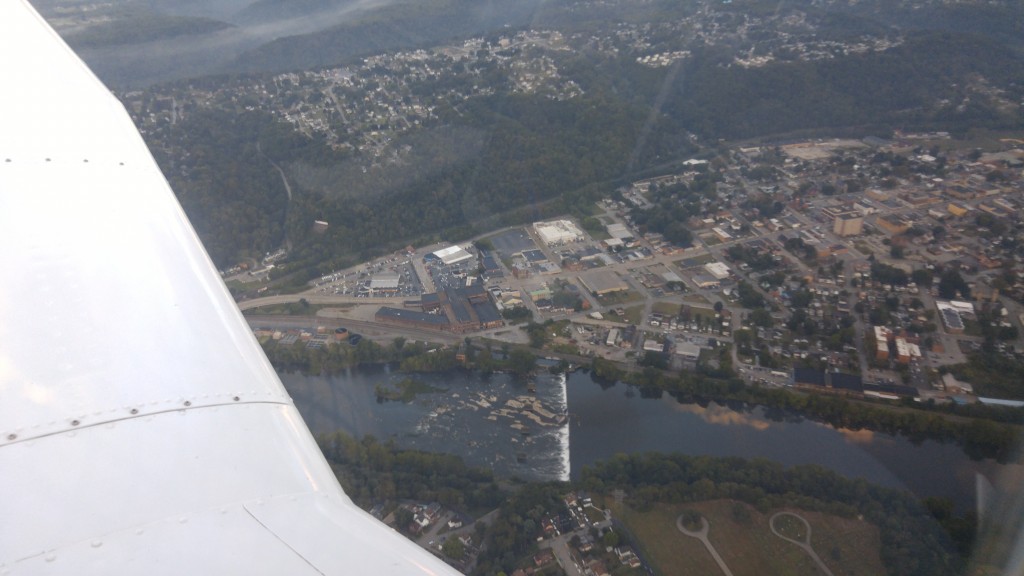
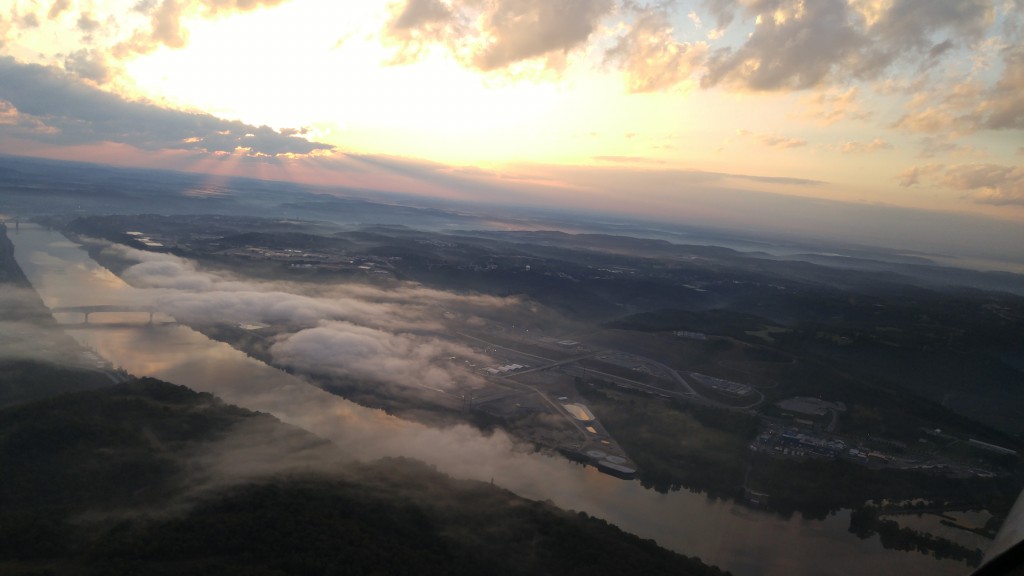
I Knew Better, but I Wasn’t Thinking
I spent a hell of a lot of time preparing the left wing ribs. Finally all the deburring was complete, and I prepared to prime them. By the time I got all the roadblocks out of the way, it was dusk when I began spraying. Outside. I think what happened is that the relative humidity skyrocketed right as I was priming and caused this failure:
Spider vs. Stinkbug
Log Catch-Up
Just completed Page 14-2. Time to date 99.75 hrs.
Previous days included 6/1, 6/4, and 6/6 on which I did a lot of rib fluting.
